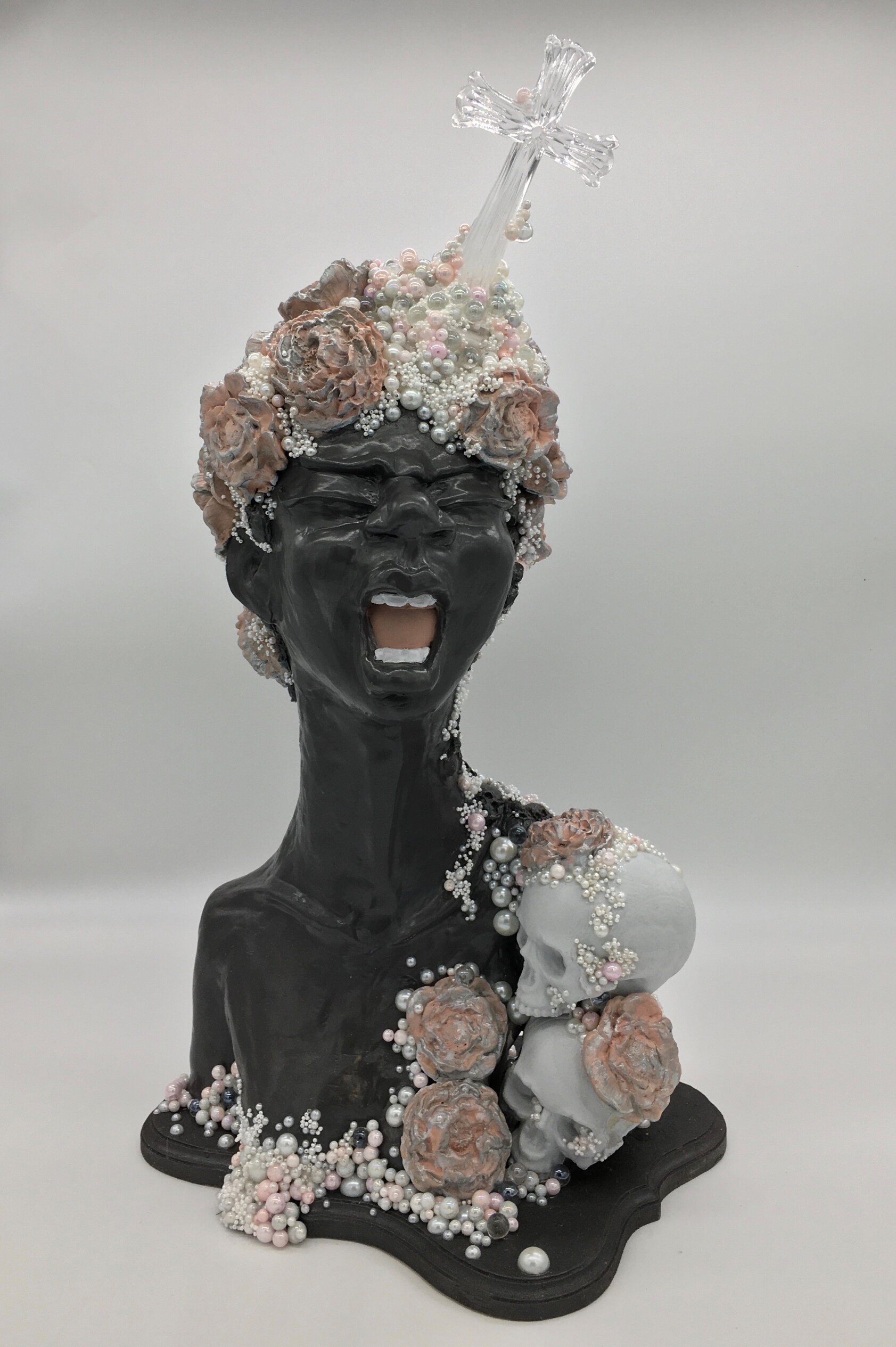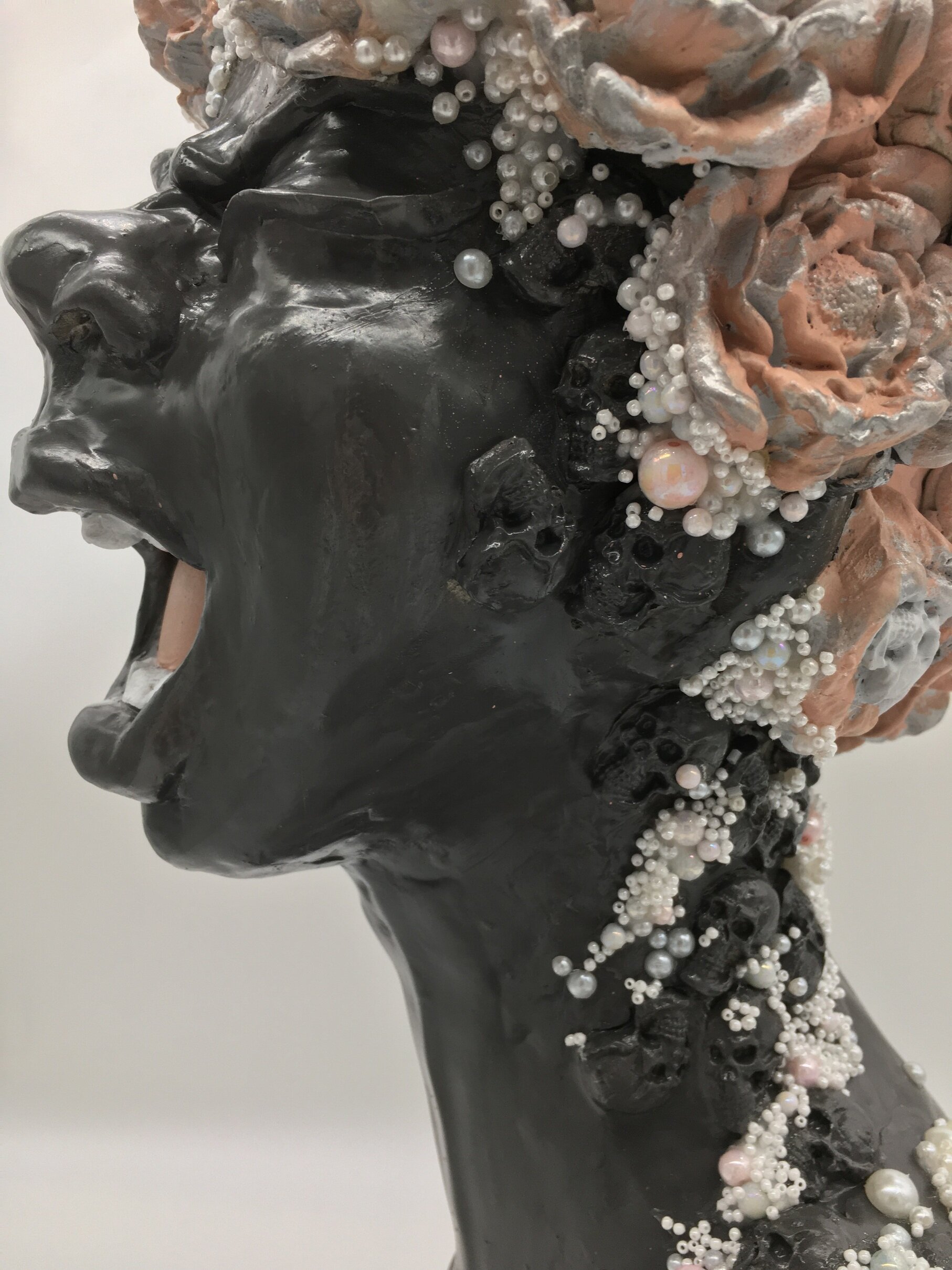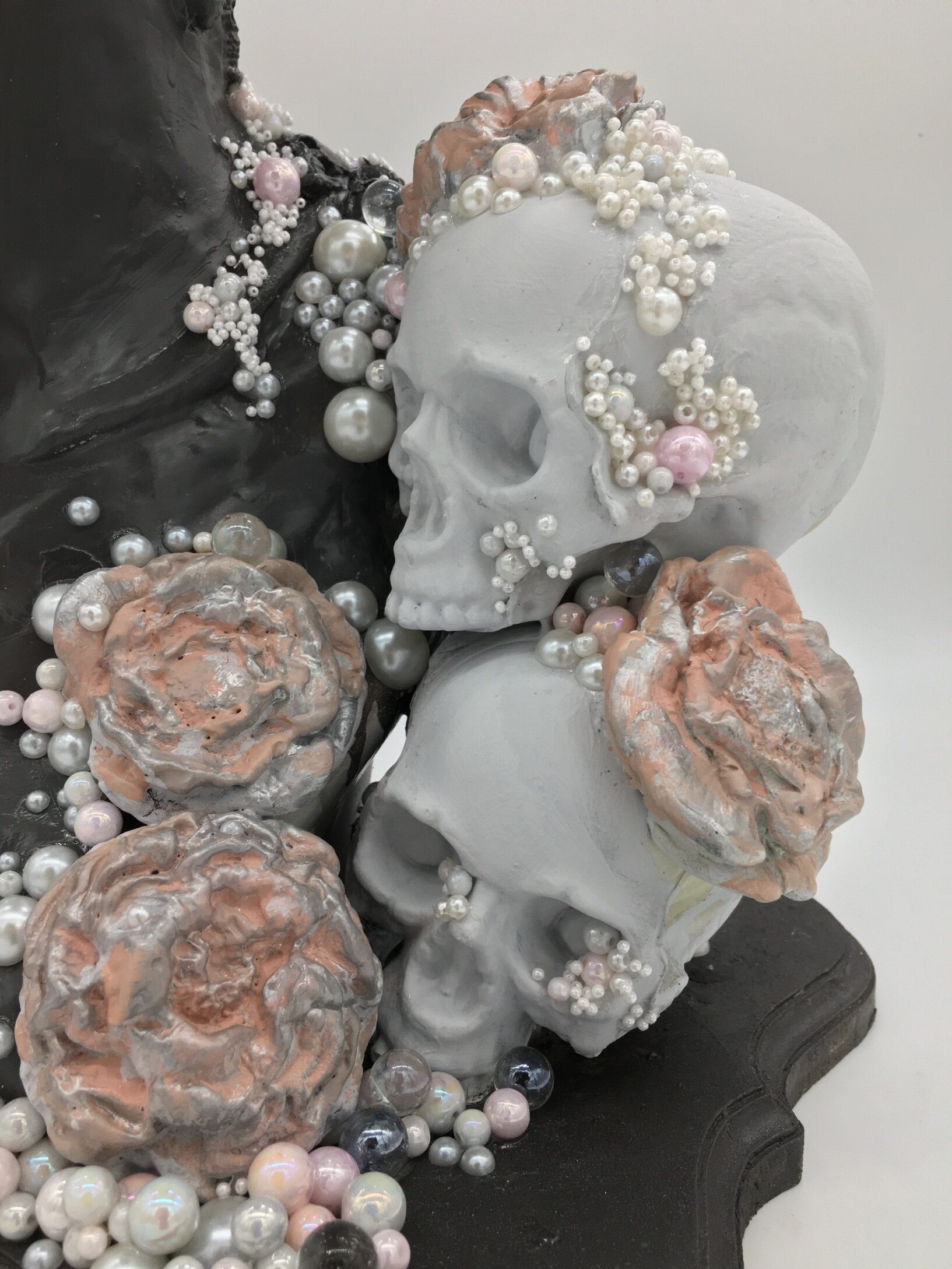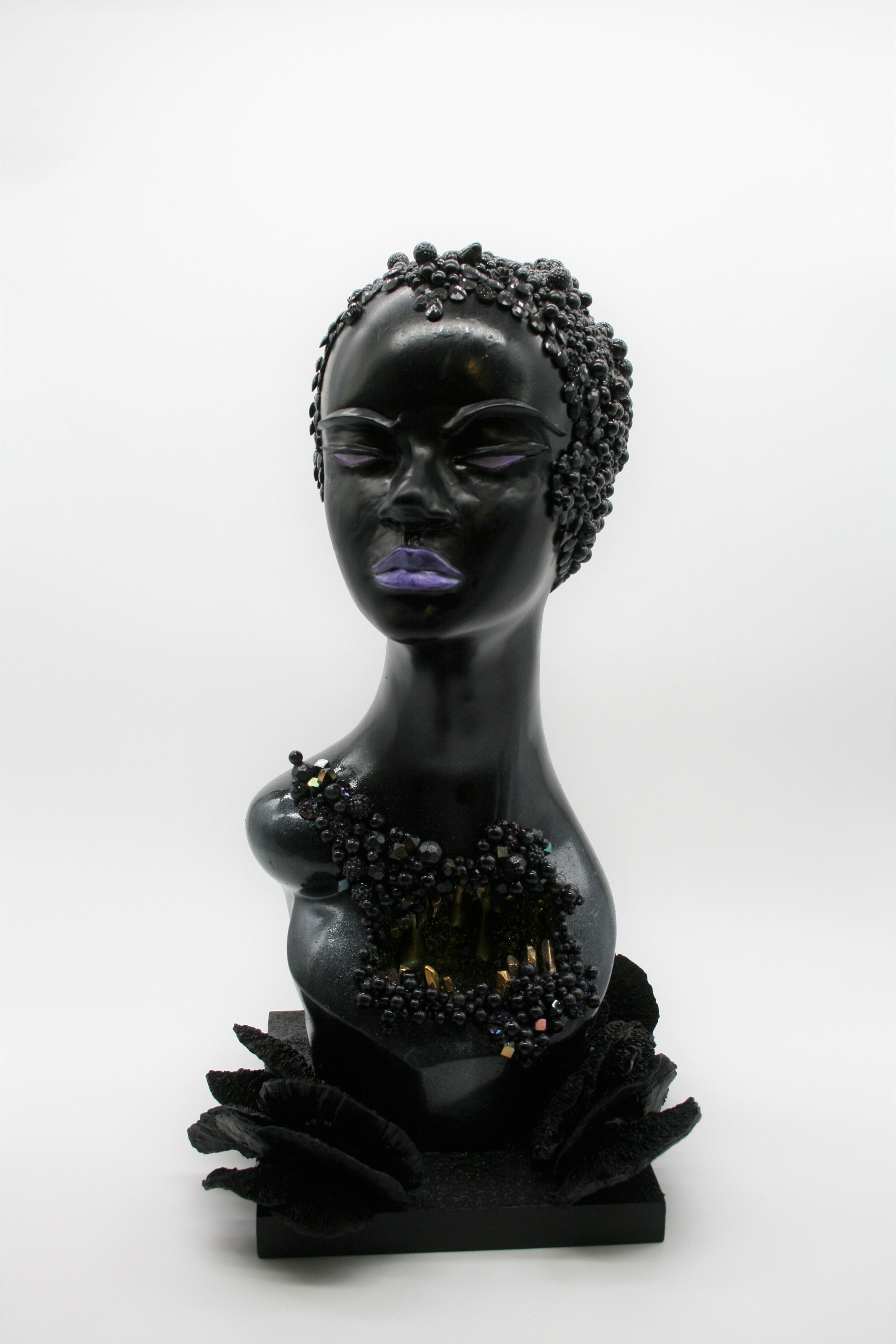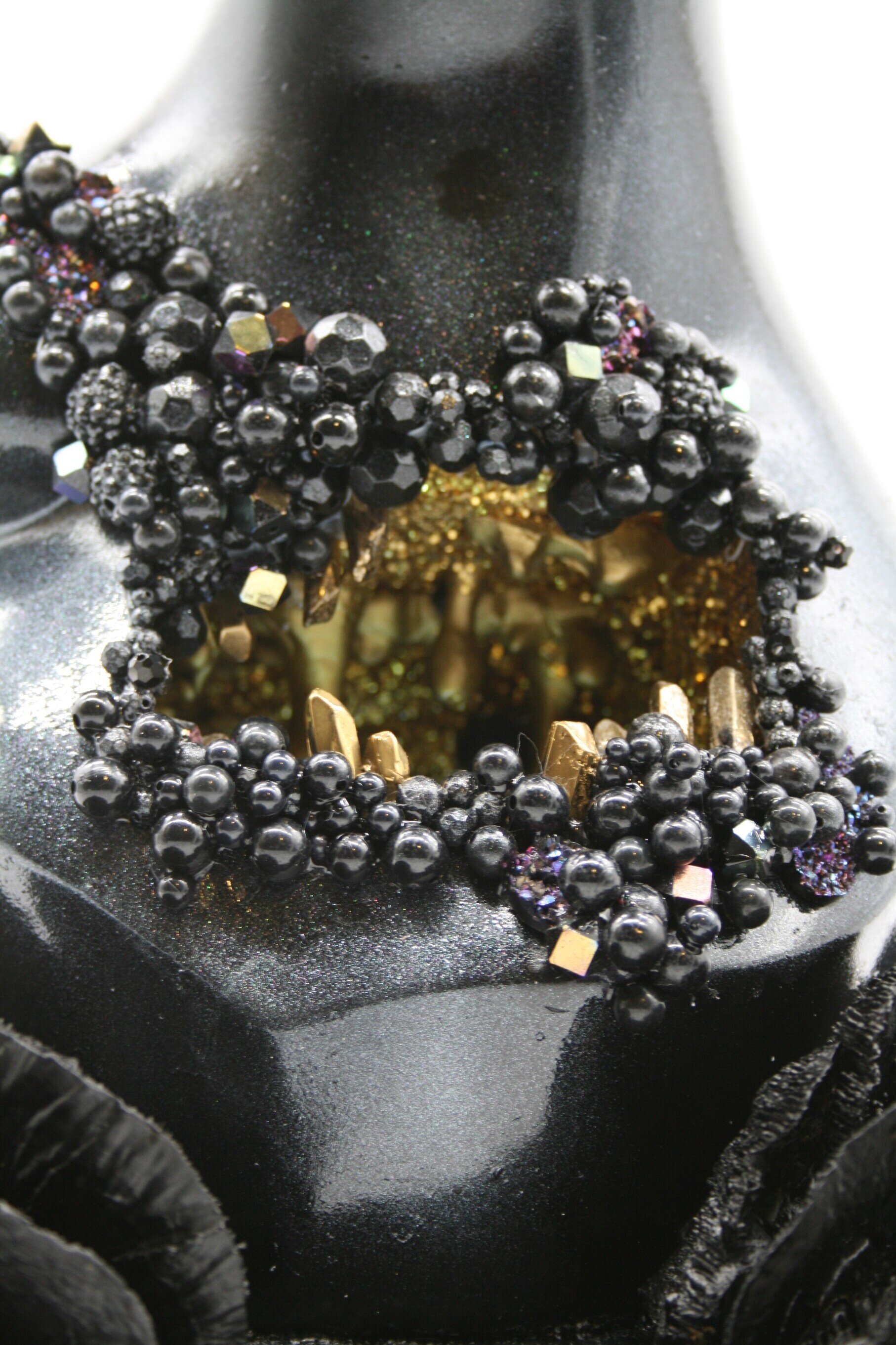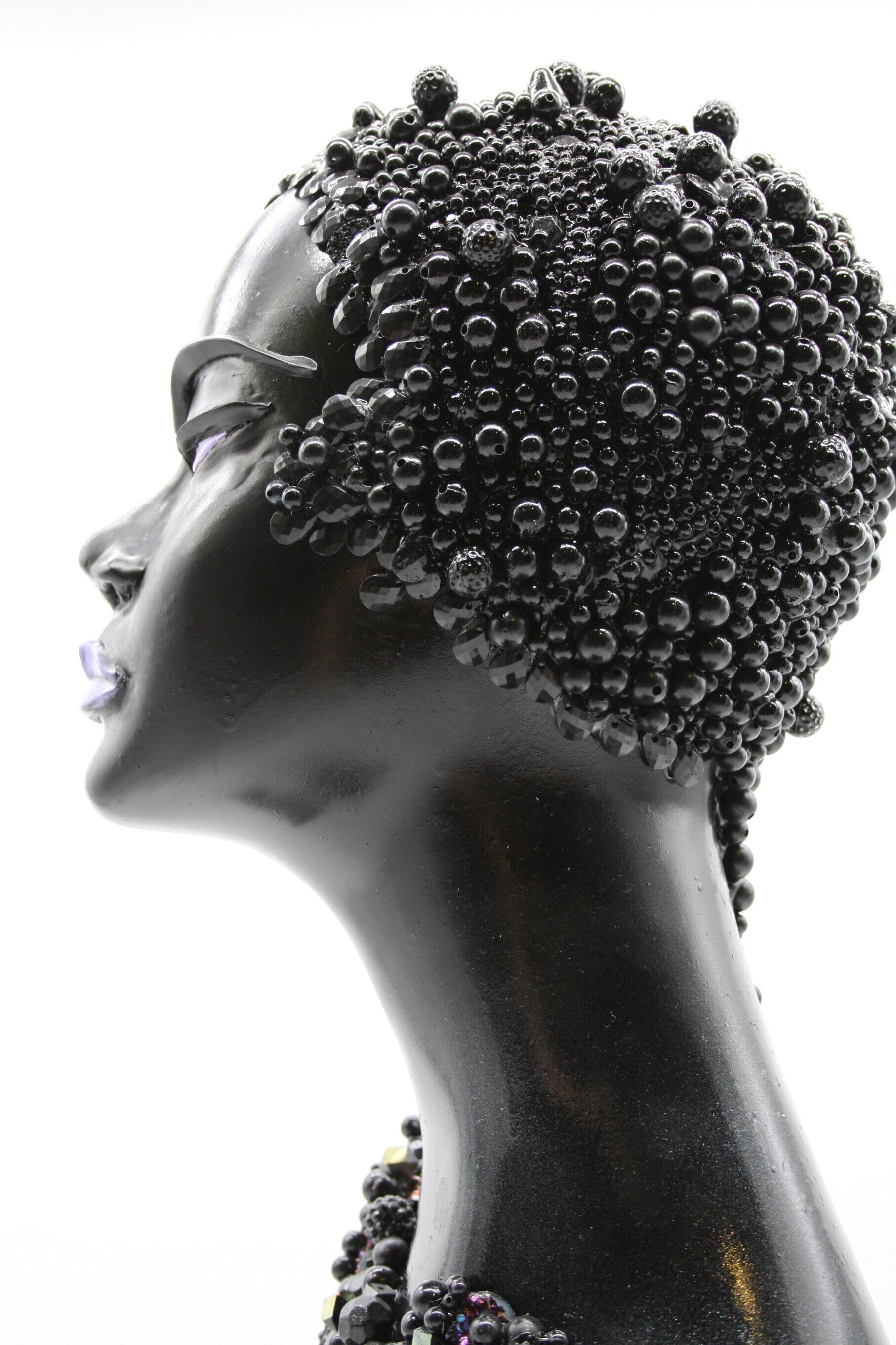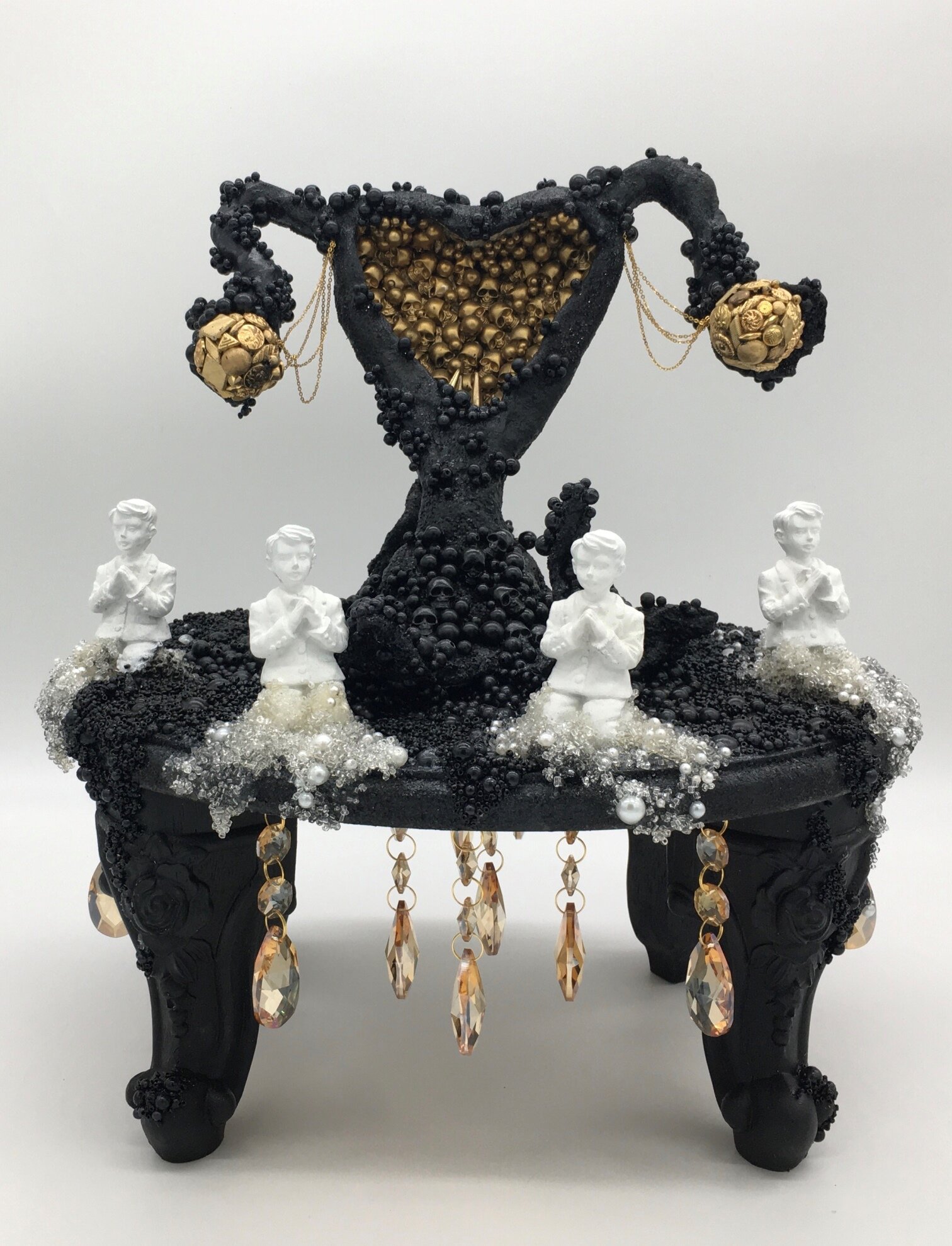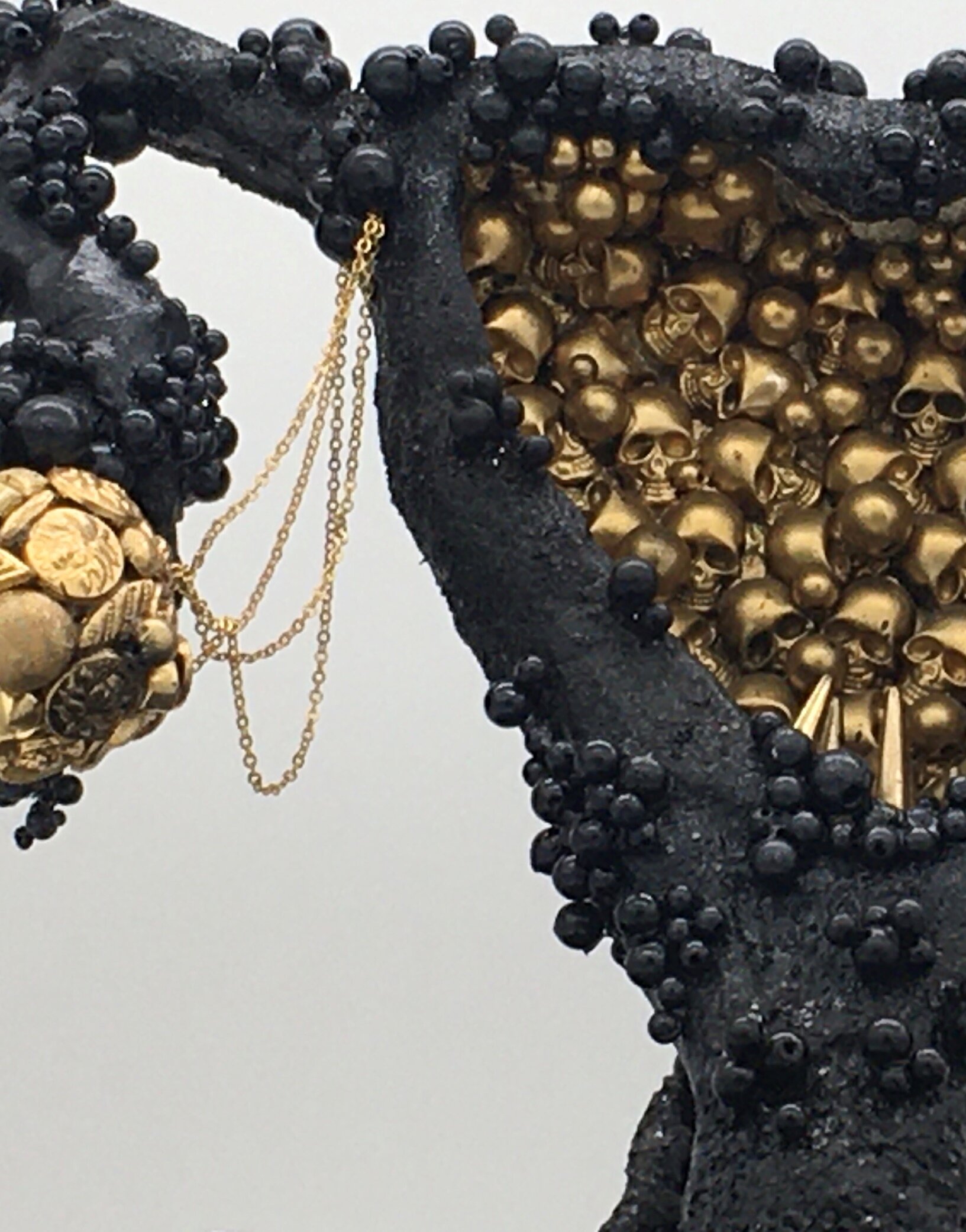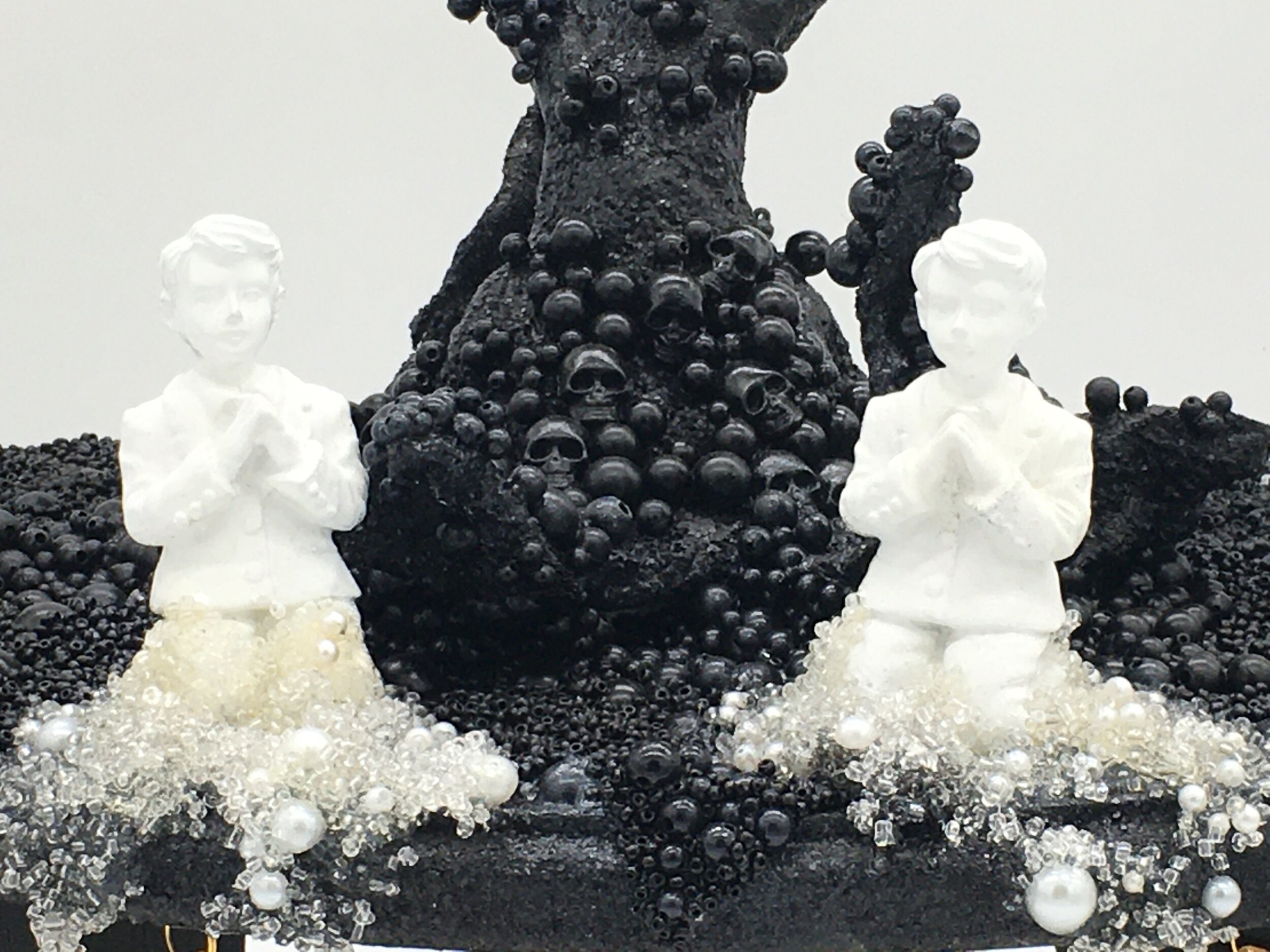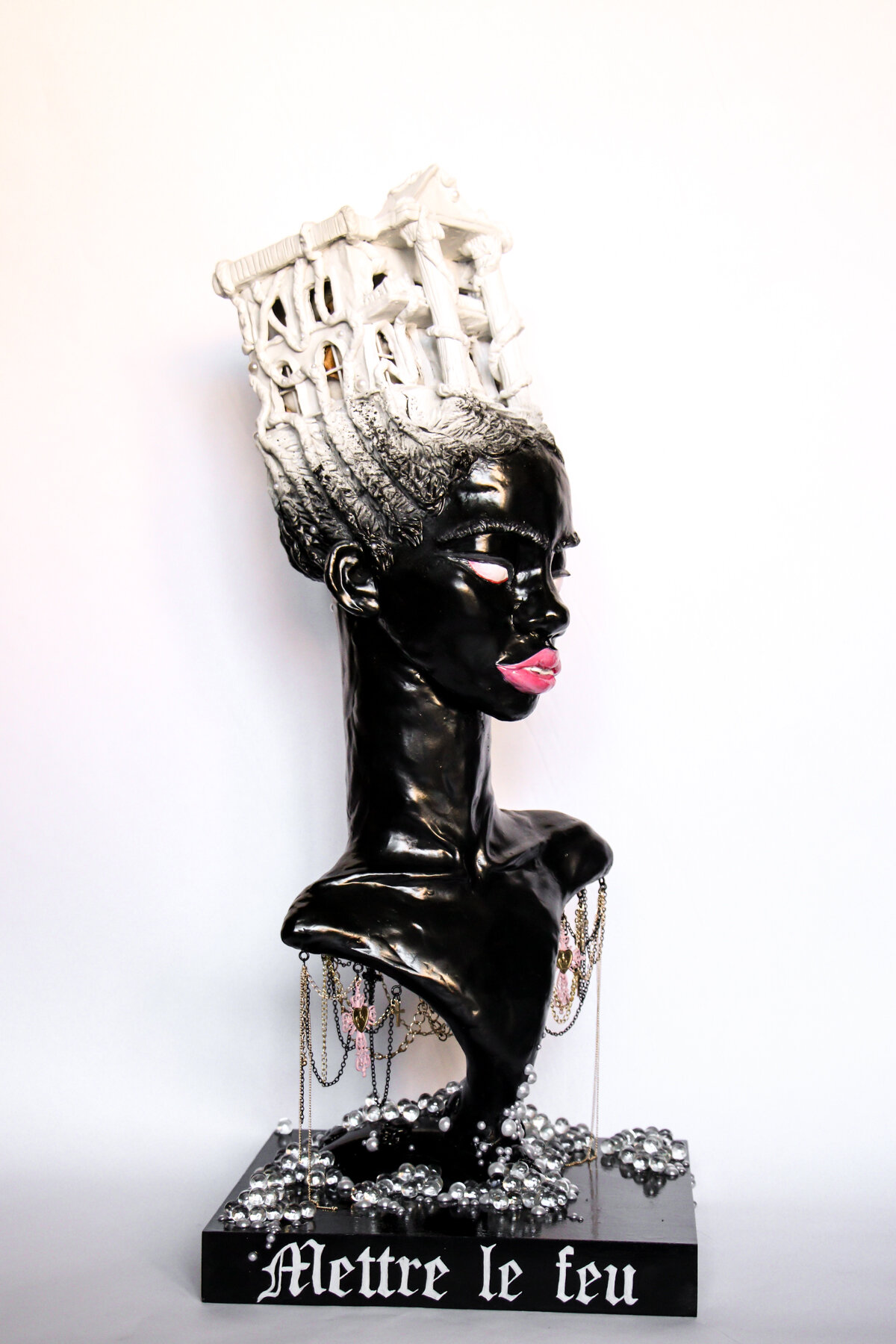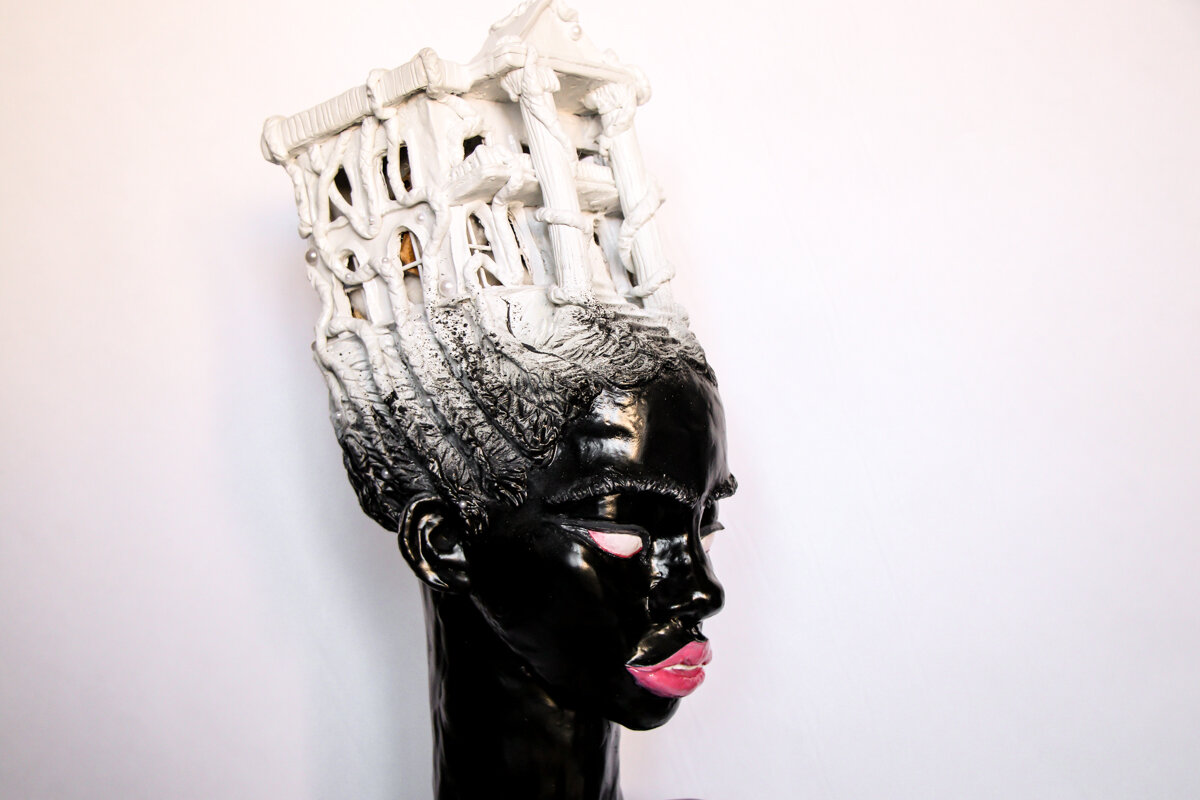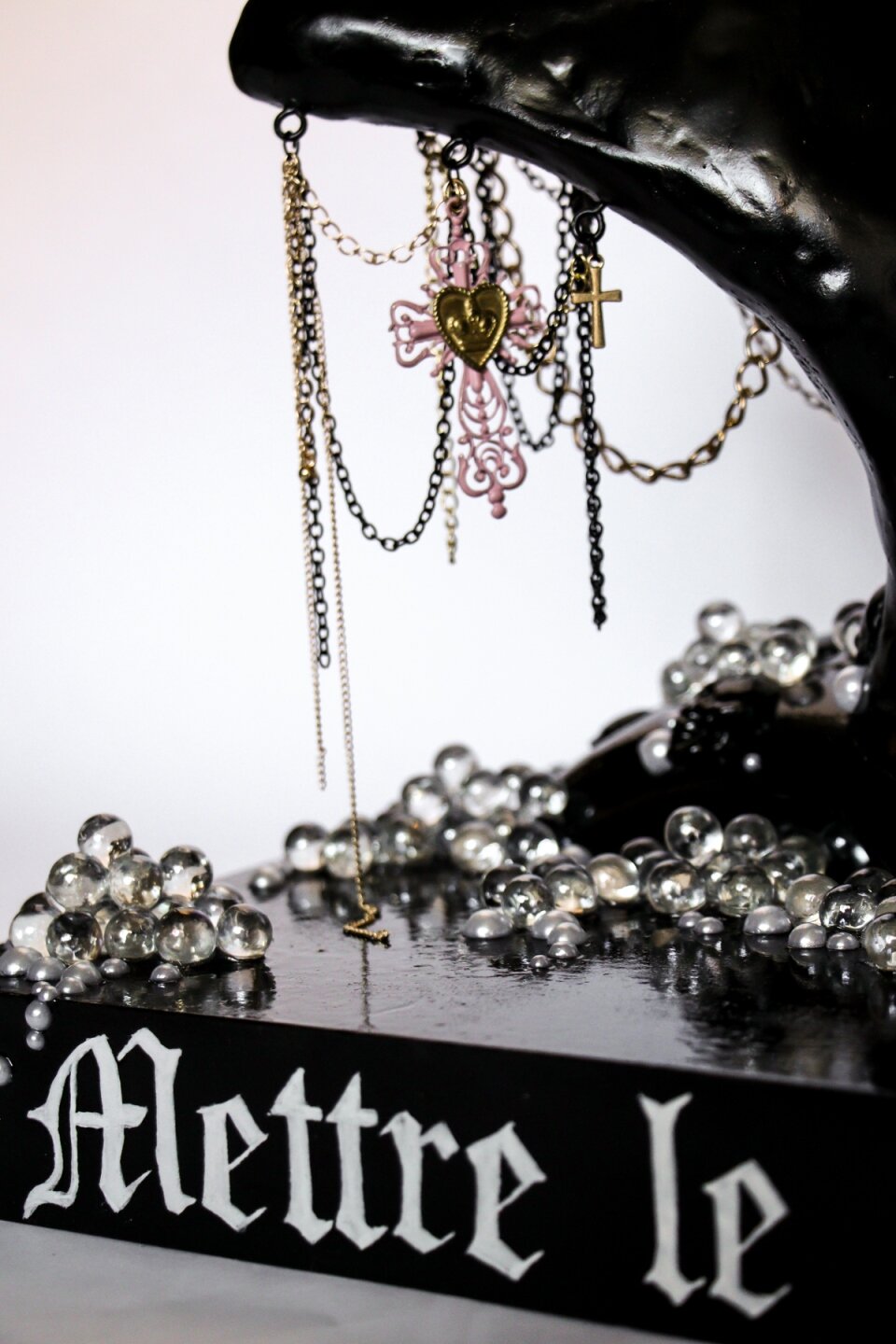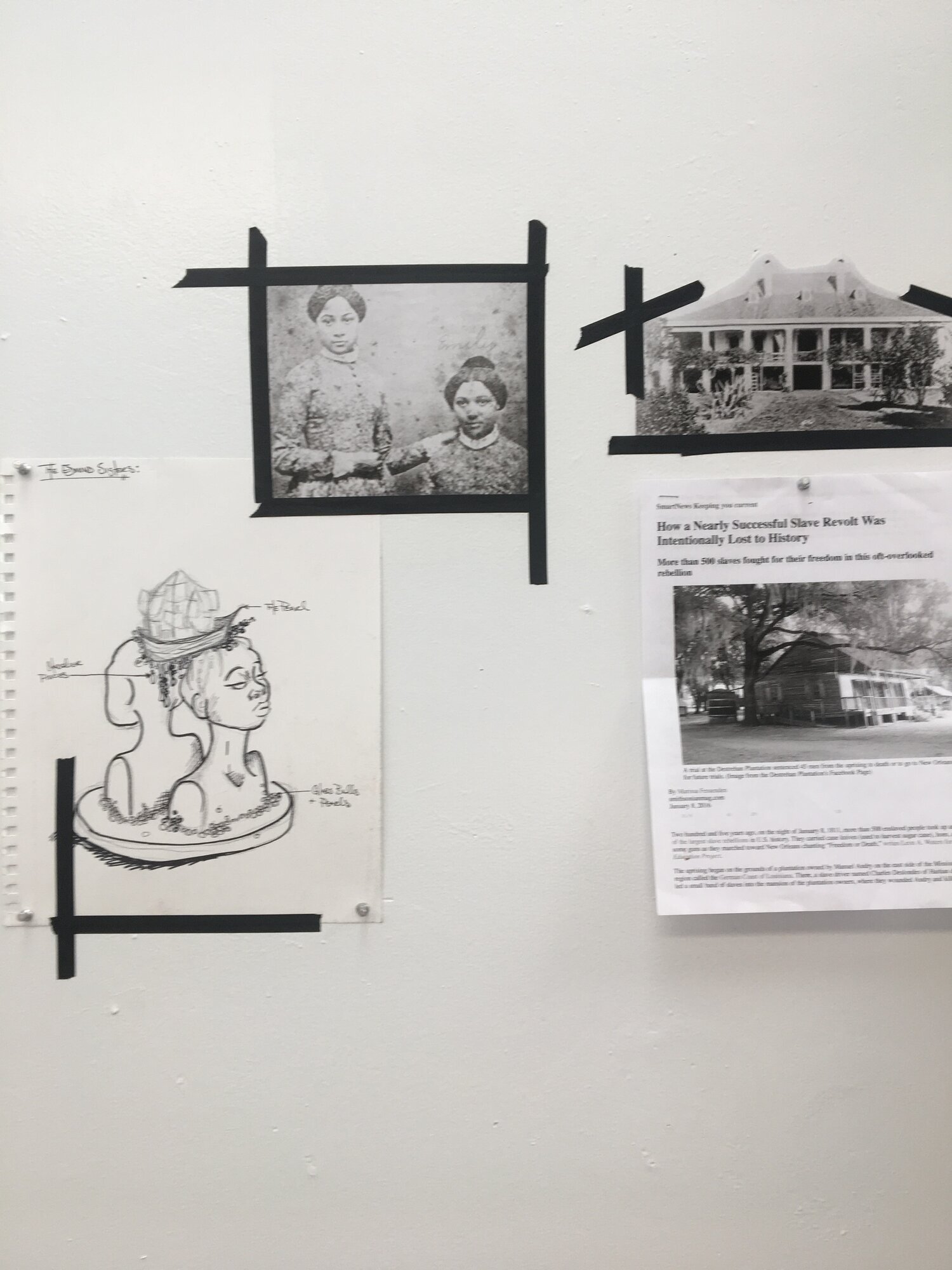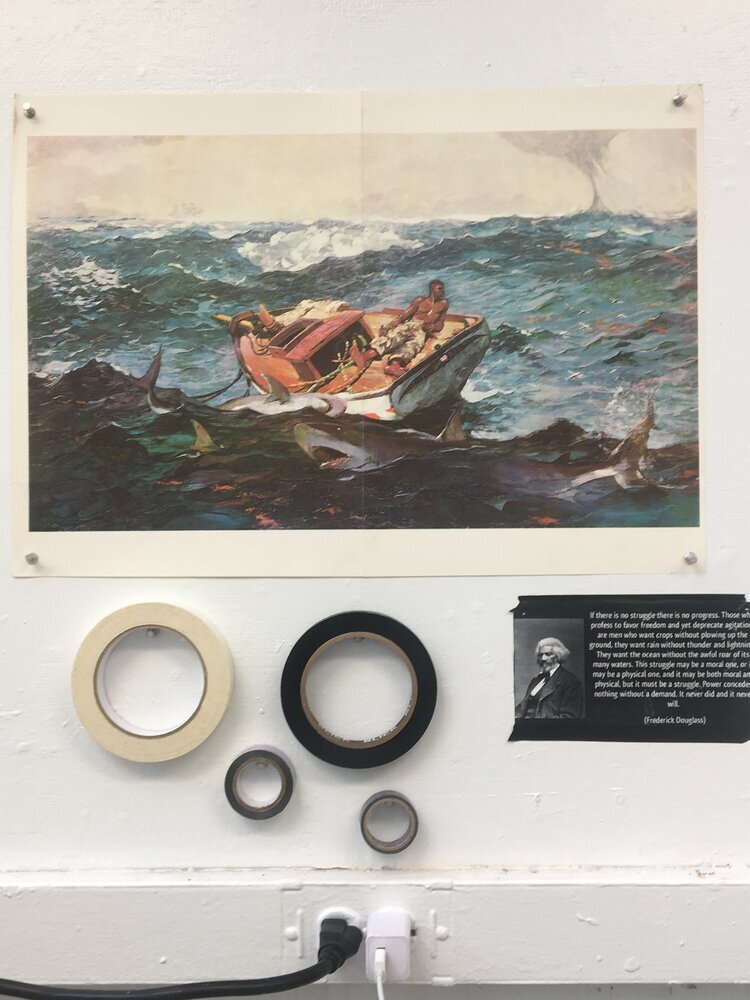Week 3I want to introduce you to the work of artist Elizabeth (Lizz) Denneau. I hope you enjoy her work as much as I do! (This interview happens to be a class assignment for our MFA program at SAIC but it was also a great opportunity for me to learn more about the incredible work she is making.)
“A lot of what I’m doing is attempting to commune with my ancestors through my work, to tell their stories as well as mine.” - Lizz Denneau
Joy Ray: Your sculptures have so much presence, Lizz. I would love to hear your thoughts on that. Do you feel they have consciousness, and are you engaged in a dialogue with them? Does this change as a piece evolves, and even after it is finished? Do they feel like “you” or “not you”?
Lizz Denneau: I think a lot of it depends on the piece itself. A lot of times when I’m working with a more figurative piece there is a connection there. It also has a lot to do with how the idea for the piece manifests itself to me. For instance I may be doing research and have an outline for how I want to address the research visually. I know that there will be a bust and it will be attached to - whatever and then I usually rely on the piece to tell me what it needs after that. Or, I have an object that I know is connected to my work somehow, I just don’t know who or what they are yet. In both cases I am moving on instinct which honestly is something I’ve only done in recent years. I dialogue with my pieces constantly. I do feel they are very much tied to my creative existence and in turn my emotions (which is tied to whatever I’m researching or thinking about), but also my ancestry, my genetic memory, which makes them something different altogether.
JR: How do you think audiences/viewers sense them?
LD: I’m not always sure how viewers see my sculptures. I think there is a noticeable undercurrent in them that seems to affect them in different ways. Some folks tell me they like my work but can’t look at it too long - they’re afraid it will look back or it just makes them uncomfortable in general. I’m totally ok with that. Others tell me it feels “powerful”.
JR: I would love to hear more about the materials you use. How do you select them, and why? For instance….Are there materials that you are working with for a purely functional reason (they do a job that you need to get done)? Vs materials that you select for resonance with your themes/subject matter? Vs materials that you are intuitively drawn to but you’re not quite sure why?
LD: I tend to collect lots of adornments. Weird little objects, things I find in thrift stores that for some reason speak to me. Sometimes I am hunting for something specific like a porcelain figurine or an antique tea cup.Those items are generally the focal points of the piece, they're conveying something. The jewels and things I attach to my objects don’t always have direct meaning. I may be choosing them on instinct or to create a greater aesthetic.
JR: And what is the material you use to sculpt your figures?
LD: Most times I find a base that speaks to me, a wig display head, a busted up mannequin and then I transform it. Sometimes I cut it apart or add to it. I use an apoxie clay to create the rest of the base such as the face or a hand or a body. I get a lot of satisfaction from refurbishing and transforming an object into something else.
JR: It seems that your work takes a long time to make. The making is labor intensive, as is the historical research that goes into your work. What are your thoughts about this? Are time and/or labor important components or materials of your work? Do you seek ways to make work more quickly? How would that change your work?
LD: When I was younger I did a lot of painting and I would produce a series of paintings quickly for a show. I always had to have a looming deadline. The result would be some ok paintings I was never satisfied with fully. When I went back to school in my late 30s I found myself falling in love with printmaking and I think a huge part of it was that I was forced to slow down. Printmaking is this sometimes tedious step by step process, but I was often left unsatisfied with my results. When I started sculpting I knew I had found something that brought all my artistic sensibilities in one medium and I realized that if I was going to be satisfied with this work I had to take my time. I found that I enjoyed slow art making (sometimes a little too much) and I could happily spend hours gluing tiny beads to a bust. I might gain some skills like mold making that will make my process slightly faster, but I’m not really concerned about that right now.
JR: I notice you are working on heads/busts right now. This makes me think about Greco-Roman statuary, Barbie styling heads and wig shop displays, among other things. What are you thinking of in choosing to work in this form? Do you think you’ll ever make bodies (or have you ever done so)?
LD: The first experiment in these sculptures was a 6 ft woman pieced together from mannequin parts, I created specifically for a show. She was lovely, but a little janky and I wasn’t super well versed on what materials would work for this type of sculpture. I eventually pulled her apart and am reworking her. I haven’t attempted to go big again yet because I am aware of how much that would take and quite honestly my studio is too small for life sized work.
JR: I’m interested in the idea of magic, spells and manifestation. Do you feel that your work is summoning or embodying any type of magical energy or charge (note: I do!) If so, how would you describe it, or what do you hope that its purpose is?
LD: A lot of what I’m doing is attempting to commune with my ancestors through my work, to tell their stories as well as mine. I reach out to them for inspiration and guidance. They don’t always answer though. It is clear to me that I have to do the work to be able to connect with not only my ancestors, but also what I see as a greater creative energy that I believe all artists have access to. Drawing on this idea of genetic memory, that we as human beings are tapped into generations of experience that we may not have a clue about, and then using that to create, well that is a form of magic making. I think the idea of spells is interesting. I think an expansion of that term is needed. A spell is a ritual to summon magic into your life and intercede on your behalf or someone else's. I’d like to suggest that we do this all the time, just not through what we traditionally think a spell is. If my aim is to convey emotion, education, communion, and empowerment through my art making, it is an act of intercession that those things would affect those who would view my work. If you look at it that way, my artwork could be spells in solid form.
JR: I love that idea and I totally agree with it. Speaking of spirituality, what is an Orisha? I’d love to know more about the Yoruba traditions you mention in your blog.
LD: An Orisha is a sort of minor deity or spirit originating from the Yoruba religion. There’s a lot of manifestations of Orishas because of the Atlantic Slave Trade. The religions and traditions of Africa came with its people not only to the US, but Mexico, South America and Canada. So you’ll see variations on the tenants of Yoruba traditions such as Hoodoo and Voodoo. They intercede on the behalf of humans not unlike the saints in Catholicism. To be honest I’m still learning about the Yoruba traditions.
JR: I love your studio walls! I feel like they are works of art in their own right. And it’s so interesting to get glimpses of your research. How do you find your research stories such as the Pearl Incident and the slave revolt on the Destrehan Plantation? Are there particular books, authors or resources that are most helpful to you? What attracts you to particular stories?
LD: My discovery of the Pearl Incident was driven by my ancestors. I was creating the piece Metré le feu and found myself obsessively gluing pearls instinctively. My good friend was watching my process at many stages and asked what was with all the pearls. I told her that the sculpture just told me she wanted them. I had no idea why and shrugged it off. She was convinced it meant something and came back very excited and said “so you know about this Pearl Incident right?” I figured my ancestors were asking me to do some research. The Pearl Incident led to so many different stories. You start digging up these bones and you just find more. My interest in the resistance efforts by slaves led me to the story of the revolt on Destrehan Plantation. There was actually a fabulous reenactment of that revolt created by Dread Scott. So it’s books, other artists, news articles, films. Once you train your eyes on a topic you will see the threads everywhere, you just have to figure out which one you should pull on.
JR: What artists do you consider yourself to be in conversation with, and what is your perspective on that conversation?
LD: I’m not sure I feel like I’m in conversation with any artists - at least ones that influence me the most. I don’t yet feel like I’m part of the conversation, but I am fed by it. Hopefully that makes sense. I went to see Bisa Butler’s exhibition at the Art Institute. I am continually nourished by her work, but the most powerful moments were watching how her work nourished the people encountering it for the first time - particularly Black people. It was something to watch. It reminded me and grounded me in the power of representation and how it can give the gift of being seen. I am fed by lots of artists - the power of words by Glenn Ligon, the subversive truth-telling of Kara Walker, the arresting nature and symbolism of reclaimed objects by Abigail DeVille, the materials and meaning-making of Rashid Johnson… There are so so many and I’m truly thankful for the banquet of inspiration they provide.
Elizabeth Denneau is an artist and art educator residing in the Sonoran Southwest. In her artistic practice, she is continually influenced by narratives of human perseverance, vulnerability, hidden histories, and power dynamics. Elizabeth works in a number of mediums, which are often inspired by her time as a fashion designer. In an attempt to connect with her ancestors, her current work is a series of sculptures that revolve around the unspoken, buried, and erased histories of the antebellum south and their reverberations throughout generations into modern culture. She teaches contemporary art and culture at Marana High School in Tucson, Arizona while working with local community organizers and colleges to develop practical models of social justice in art education. You can learn more about her here and follow her on Instagram at @lizz_denneau_art.
You can find Lizz’s interview with me here.
All photographs courtesy of Elizabeth Denneau.

